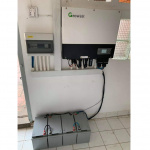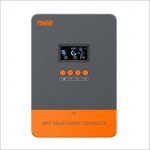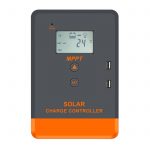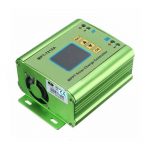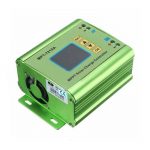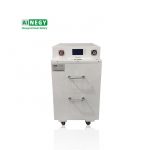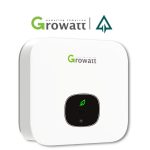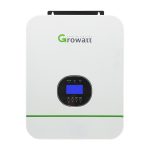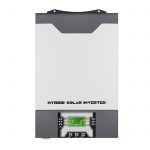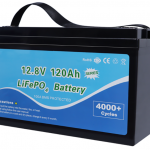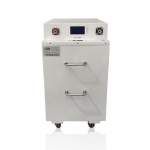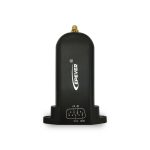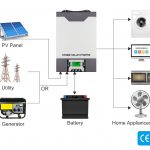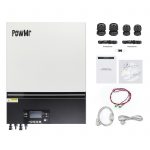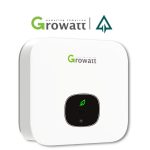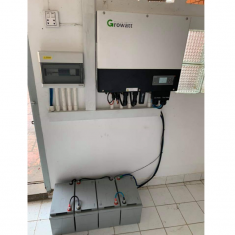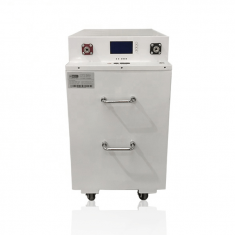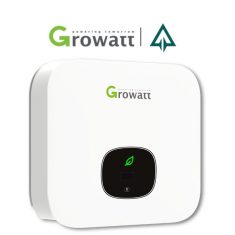Select MPPT Solar Charge Controller
It is an electronic system that helps solar modules generate all the power they can provide. On the other hand, it is not mechanical tracking technology that physically moves the modules in the direction of the sun to convert more solar energy into electricity. When properly designed, a 5% budget solar controller can optimize the system for optimal performance.
You can actually see the benefits of the MPPT controller more clearly: in a system using a traditional PWM charge controller with 1000W solar panel capacity, for the same load, same battery, replace it with an MPPT controller , you only need to install a 700W solar panel, which is enough to meet the power needs of all electrical appliances. Electricity from a solar charge controller charges Solar Batteries used in various household items.
Additionally, this current can be passed to the investor, converting direct current or direct current to alternating current or alternating current. At night or if the solar module is not producing any power or energy, the energy may actually flow back from the battery to the solar module, draining the battery. A solar charger controller will assure you that this doesn’t happen.
We all live in a time when solar energy isn’t really delivered from solar panels to electrical circuits, and it’s nearly impossible to get through without the many appliances and gadgets that make our lives easier. The moment you lose power in your home or workplace, things stop. If you don’t have an inverter in your home or office, this situation can leave you at a loss.
In this day and age, we have numerous appliances that make our daily lives easier. We rely on these machines for our household chores as well as domestic and professional requirements. In fact, they can safely be called basic necessities. But what if they all stop working immediately? Scary, right? As long as the voltage is below these values, it is easy to find a suitable Solar Charge Controller. If there are special requirements, it is also easy to find solar charge controller manufacturers to order if these input voltages are higher than the rated value.
Just released a sizing calculator to choose the right ampere controller. Check here. The Powmr inverter features an ultra-modern design, supports smart WiFi, requires no maintenance, and is completely safe for children. This is a revolution and a miracle in backup power systems. They provide real-time data connections on backup, percentage of load running on the inverter, percentage of battery charge, input voltage, and more. At Powmr, we bring you the Zelio UPS power inverter range, one of the smartest connected inverters in the world.
Both Uninterruptible Power Supplies (UPS) and power inverters are used to supply power and are often confused with each other. The best way to understand the difference between a UPS and an inverter is to first understand how they work. Diesel generator sets are known to emit harmful fumes, causing pollution levels to rise. As a step to control pollution levels, the Global Environmental Pollution Control Agency has banned the use of diesel generators in Delhi unless the NCR – an order passed in 2017 when ambient air in the country’s capital dropped to unfavourable levels.
An inverter is a device that can operate equipment without power, depending on the capacity of the inverter installed. However, when it comes to choosing the best inverter for home use, you may be confused. At Powmr, we can solve your problems with a comprehensive selection of inverters of all types. The lithium-ion battery has a lifespan of up to 10 years and is completely maintenance-free. The intelligent battery management system and safety mechanism prevent surges and short circuits, making it the best sine wave home UPS system with built-in batteries.
In addition to this, the integrated Regalia range we have has a touchscreen display that shows backup time and battery charge time. MPPT solar charge controllers can be perfectly integrated with grid-connected solar modules. Another significant advantage of the MPPT solar charge controller is that you can save a lot on cable and wiring costs, which means smaller gauge wiring or wiring can be used.
When choosing an MPPT solar charge controller, you must ensure that the following basic features are in place: voltage and current regulation, pulse modulation or PWM control, current compensated load disconnect, temperature compensation, and automatic load reconnection. Theoretically, the use of MPPT charge controllers in solar power systems can increase efficiency by 50% compared to traditional methods. But according to powmr tests, the final efficiency can be increased by 20% – 30% due to environmental factors and energy loss.

